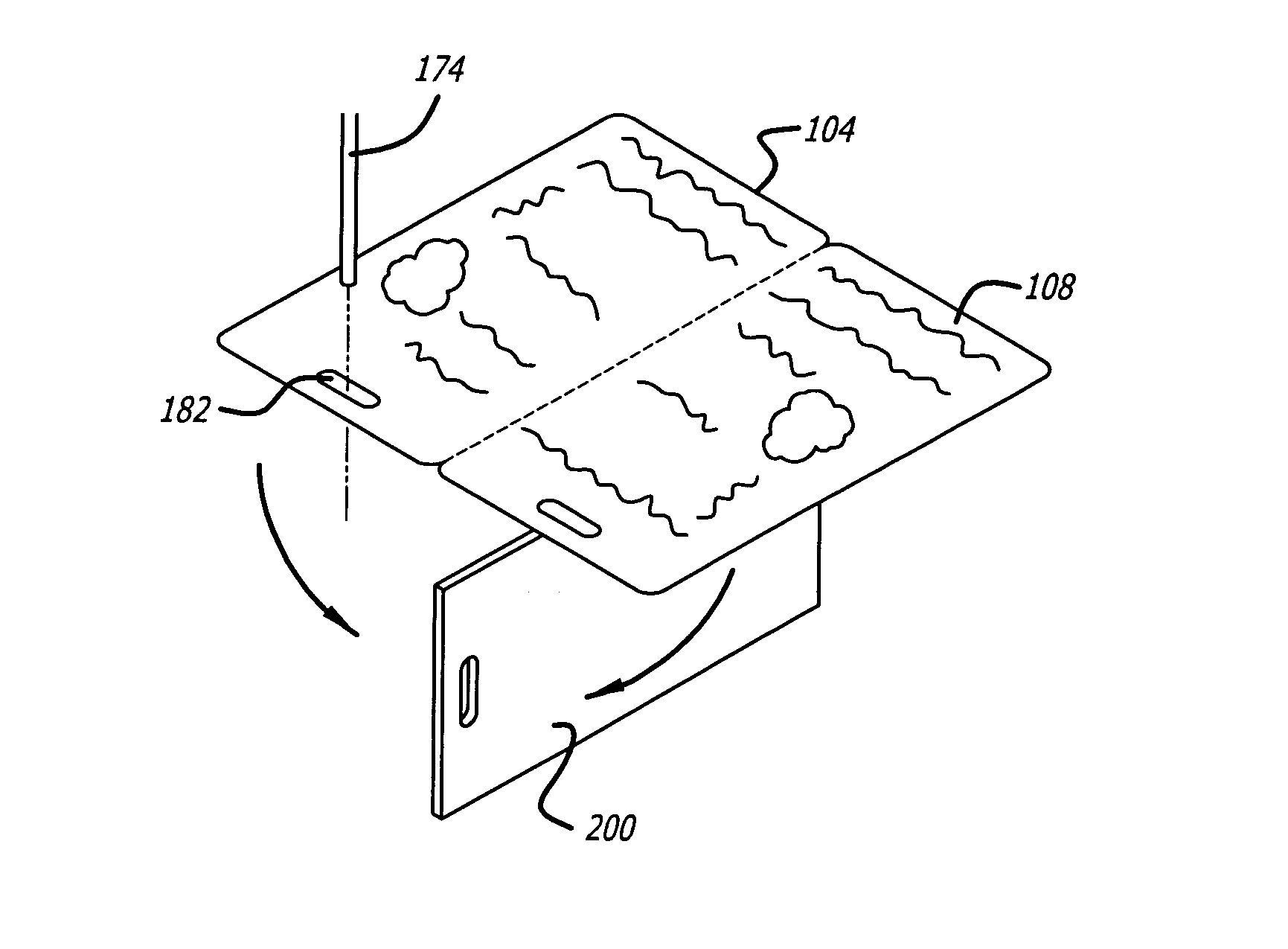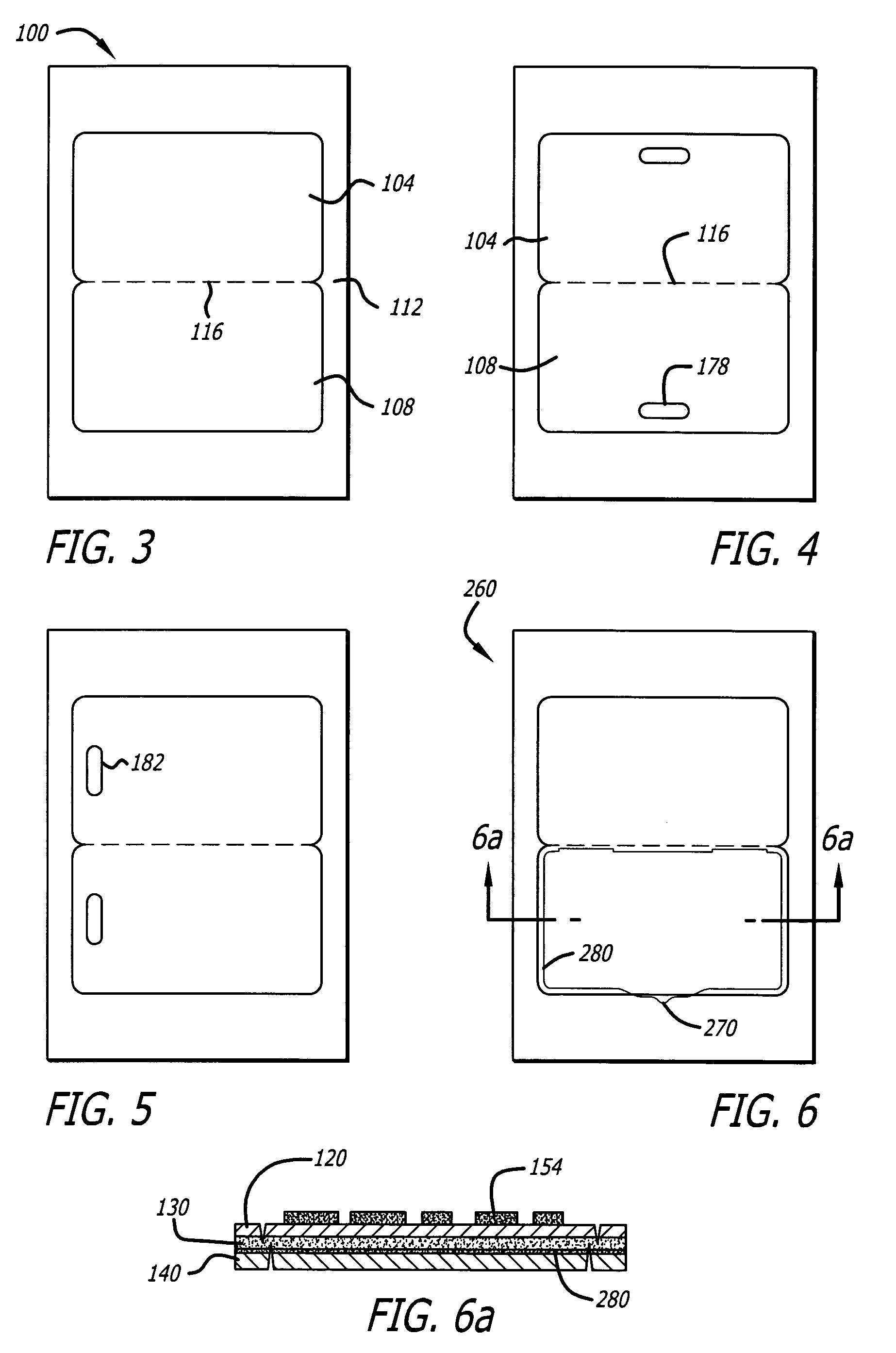Identification badge construction
a badge and identification technology, applied in the field of identification badges, can solve the problems of ineffective identification of visitors and inability to use standard labels for such applications, and achieve the effects of reducing ease, easy use, and creating his or her own photo id badges quickly and using inexpensive media
- Summary
- Abstract
- Description
- Claims
- Application Information
AI Technical Summary
Benefits of technology
Problems solved by technology
Method used
Image
Examples
first embodiment
[0086]Referring to FIG. 3, the present invention shown generally at 100 includes two adjacent badge size labels 104, 108 on a sheet 112, attached at the joining point by a perforation 116. This embodiment can be made of a facestock 120, adhesive 130 and a silicone coated liner 140 in FIG. 6a and can be used in different ways. The first way is that after it has been printed upon such as by a printer or a copier 150 (see FIG. 1), it can be removed from the carrier sheet and simply folded at the perforation 116. This provides a two layer construction with some of the properties of a card, but it would have been printed with indicia 154 on both sides with a single pass through the printer or copier (see FIG. 1 at 150). This can then be removed and inserted into a carrier, such as shown in FIG. 2 at 170 and as is known in the prior art. The two-sided card can also be suspended from a lanyard 174 (FIG. 51) if holes 178, 182 are included either on the top and bottom or on the sides as show...
third embodiment
[0102]A third embodiment shown generally at 500 in FIG. 10 is designed to be applied to one side of an RFID card 200 or some similar device such as depicted in FIG. 51. This embodiment would be printed on the liner side 510 in an inkjet or laser printer as can be understood from FIG. 10a. The printed liner section 520 can be removed, flipped over, as shown in FIG. 10b, and reinserted into the area from which it was removed, as can be understood from FIG. 11 at 530. The printed indicia 534 is visible through the transparent film 538. The entire center section 540 can then be removed, as shown in FIG. 11a, and applied to an RFID card, as the exposed adhesive area 550 around the centered printed card bonds the center section to the RFID card or other device.
[0103]First and second alternative embodiments to construction shown in FIG. 10 are shown in FIGS. 12 and 13, at 580 and 590, respectively. They can have hanger holes 600, 604 that are cut through the face and liner and are attached...
PUM
| Property | Measurement | Unit |
|---|---|---|
| size | aaaaa | aaaaa |
| size | aaaaa | aaaaa |
| size | aaaaa | aaaaa |
Abstract
Description
Claims
Application Information
 Login to View More
Login to View More - R&D
- Intellectual Property
- Life Sciences
- Materials
- Tech Scout
- Unparalleled Data Quality
- Higher Quality Content
- 60% Fewer Hallucinations
Browse by: Latest US Patents, China's latest patents, Technical Efficacy Thesaurus, Application Domain, Technology Topic, Popular Technical Reports.
© 2025 PatSnap. All rights reserved.Legal|Privacy policy|Modern Slavery Act Transparency Statement|Sitemap|About US| Contact US: help@patsnap.com



